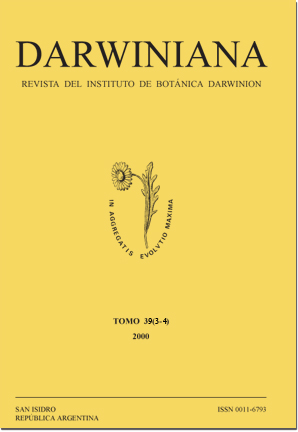POLLINATION BIOLOGY OF HABENARIA PARVIFLORA (ORCHIDACEAE: HABENARIINAE) IN SOUTHEASTERN BRAZIL
DOI:
https://doi.org/10.14522/darwiniana.2014.393-4.220Keywords:
Habenaria, Orchidaceae, Orchids, Flower morphology, Moths, Pyralidae, Tipulidae, Crane-fliesAbstract
The pollination biology of Habenaria parviflora (Orchidaceae: Habenariinae) was studied in Picinguaba, São Paulo State, southeastern Brazil in order to broaden our knowledge on the pollination biology and functional morphology of this terrestrial orchid genus. Plants are self-compatible but pollinator-dependent. The recorded pollinators were crane-fly (Diptera: Tipulidae) females and pyralid moths (Lepidoptera: Pyralidae). The pollination mechanism is the same regardless of the kind of pollinator: the pollinaria are fixed on the insect proboscis through the glove-like viscidium and removed when the insects leave the flowers. A pollinarium-carrying insect visiting another flower will brush the stigmatic surfaces and leave clumps of massulae, thus effecting pollination. This mode of pollinariumfixation is, as far as we know, reported for the first time for the genus Habenaria and is a clear consequence of viscidium’s morphology. The involute, glove-like viscidium is a unique flower feature among neotropical Habenaria species. Flower features promoting cross-pollination are briefly discussed. This is also the first report of orchid pollination by crane-flies (Tipulidae) in the neotropics.
Downloads
How to Cite
Singer, R. B. (2001). POLLINATION BIOLOGY OF HABENARIA PARVIFLORA (ORCHIDACEAE: HABENARIINAE) IN SOUTHEASTERN BRAZIL. Darwiniana, Nueva Serie, 39(3-4), 201–207. https://doi.org/10.14522/darwiniana.2014.393-4.220
Issue
Section
Reproductive Biology
License

Starting on 2012, Darwiniana Nueva Serie uses Licencia Creative Commons Atribución-NoComercial 2.5 Argentina .






